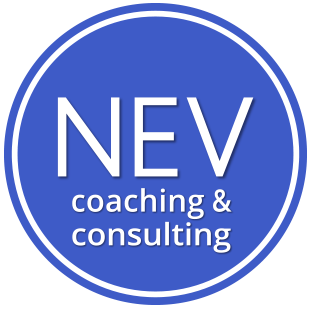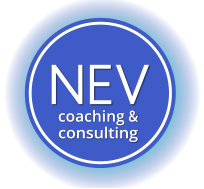Have you heard of the new global pandemic called “The Great Resignation”?
Millions of people are leaving their jobs, VOLUNTARILY!
Take a look at our short video about it…(it’s relevant for EVERYONE):
Do you know what most of us secretly want?
To be our own SUPERHERO.
To be our own CHOSEN ONE.
Master of our Lives.
Master of our Selves.
Powerful Leaders, inside and out.
Effective human beings, in all that we value and set to accomplish.
And it all depends on ONE thing: Self-Leadership.
It’s also what our world needs to thrive for the better.
In ALL aspects.
Yet the topic of self-leadership is still largely absent from personal and professional development literature. And it’s WAY more complex than the term “self-management”, which it’s often referenced as.
At NEV Coaching & Consulting, we’ve been actively researching and working on this invaluable trait with our beloved clients, over the last many years.
Why?
Because it’s SO incredibly FUNDAMENTAL to everything people, teams, communities and organizations are looking to accomplish in achieving their highest potential and success.
And it all starts with YOU.
The Individual.
Without that, the rest doesn’t matter or work.
This post is the first of three, where we break down the fundamentals of Self-Leadership to bring you clarity and insight for simple next steps to attaining your own GREATNESS.
For yourself, and others.
So what IS Self-Leadership really?
Bryant & Kazan (2012) have done extensive work on this and they defined it as:
“Having a developed sense of WHO you are,
WHAT you can do,
WHERE you are going,
coupled with the ability to INFLUENCE
your COMMUNICATION, EMOTIONS, and BEHAVIORS,
on the way to getting there.”
We wholly agree with this definition.
But let us add our own definition here:
In short: Self-Leadership is INTENTIONALLY developing + managing Yourself + Your Life as BEST Serves YOU, towards living your highest POSITIVE POTENTIAL.
What are the FUNDAMENTALS of Self-Leadership?
Bryant & Kazan break it down into two (2) core categories:
- Mental capabilities
- Behavioral capabilities
And there are 4 major subareas within each category, for a total of 8 core capabilities of Self-Leadership.
In this post, we will cover those included in the “Mental” area, and in a later post, we will explain the “Behavioral” ones in more detail. Then in a third, add our own areas, evidenced through our work and research over the years.
What are the Mental Capabilities of Self-Leadership?
Our ability to lead ourselves starts in our Mind.
In other words: the quality, precision and overall effectiveness of our thoughts, mindsets, beliefs and mental practices that make up our daily existence and life experience.
Our minds can be a place fraught with confusion, noise, and overwhelm.
But also, a space that can BECOME your safest and wisest resource.
If well nurtured and developed.
By building a quality and trusting relationship with Your Wise Self.
Our “internal world” dictates our external actions, which is our Behaviors, the second part of Self-Leadership (which we will cover in a second post).
Four major categories comprise Mental Effectiveness in Self-Leadership, so let’s get to them…
1) Mental Imagery
This refers to the intentional and unintentional images and visualizations that endlessly occupy our mental world.
Jungian psychology discusses the value of Active Imagination, our flowing and almost automatic fantasies, both positive and negative, that we all experience.
Many of us have experienced automatic negative thoughts, which is normal and nothing to feel ashamed about.
The question is: do we stop there, or do we actively engage in more constructive visualizations that can greatly power up our effectiveness in this world.
Professional athletes and performers are taught this valuable skill from the beginning: to imagine triumphant outcomes in their next competition or performance.
And it works, even if you’re still struggling with fears and destructive images that bring out your worst fears.
So how do you get started?
- Next time you have an important situation (meeting, conversation, competition, etc.), create some time to ACTIVELY imagine a detailed, POSITIVE narrative of events, instead of passively giving into your worst anxieties. Even write it down.
Check out our NEVBlog on “Control the Narrative and Empower Your EASE + WISDOM + SUCCESS” for more insight.
2) Self-Dialogue
This is another vital element that indicates how we see and treat ourselves.
It refers to the internal and external LANGUAGE we use to speak TO and ABOUT ourselves.
Are you speaking to yourself aggressively?
Or constantly insulting or undermining yourself in the way you refer to yourself with others?
If you’re endlessly thanking and apologizing…for even just EXISTING, this is another clue that maybe your self-dialogue could be improved.
Many of us are not even aware of this, but I promise you that you’re living the effects of it ALL day and every day.
So how do you make it better?
- First, try to bring awareness to how you’re speaking to yourself in the first place. Is it kind and comforting? Critical or pressuring? And how is that serving you?
- Then, speak to yourself as you would to your most beloved best friend. Many folks will wonder if they “deserve” this kindness and would insist that pushing themselves through self-criticism and shame is effective. It may feel like it, but at a cost that debilitates you in the long-run by building shame and guilt.
- Just ask yourself, “would my loved ones feel and do better being spoken to like I speak to myself?”. If the answer is “no”, then shift it towards self-compassion. I promise it will give you massive positive results.
3) Thought Patterns + Habits
Thought patterns are simply the types of thoughts we tend to have regularly, about ourselves, others and the world as a whole. They can be intentional or almost subconscious.
Damaging or misguided thought patterns, can create ongoing frustration and ineffective responses by driving us to believe and act in ways that don’t serve us or the world around us.
Especially if we give them MORE POWER, instead of identifying them and finding more constructive COUNTER-thoughts that will lead us to a better way of BEING and ACTING.
- Are you often GENERALIZING? (one thing went poorly, so now you think ALL others will as well.)
- Are you sometimes CATASTROPHIZING? (you’re disappointed with a given outcome, so you assume it will only get worse).
- Do you find yourself PERSONALIZING what happens to you? (you interpret unfavorable outcomes and other people’s disappointing reactions as something that is WRONG about you or intentionally done to hurt you).
And there are many more.
Habits refers to the conscious and subconscious ACTIONS that we continuously engage in.
When they are helpful, they provide us with great health, wisdom, and overall effectiveness.
When they are not, they can create an endless list of problems, in all areas of our lives.
The key – as with all self-leadership areas – is to create some space, time and effort to reflect on them.
Then to take out the judgment, shame and guilt around what you’re doing that doesn’t serve you, so that you can openly, creatively build new habits that do.
One little step at a time.
4) Beliefs + Assumptions
Thoughts we repeat continuously convert into beliefs. More deep-set values and perspectives that guide the way we see ourselves, others and the world. And as a result, the way we behave.
The challenge with our belief systems is that many of them were created when we were very young, from the influence of caregivers, society and a myriad of other factors.
That means that it can be difficult to even recognize them.
And often times the limiting (destructive) beliefs we have are something we intellectually know is not helpful, yet it is so deeply ingrained in us, that it still has powerful influence over our thoughts, emotions and actions.
Likewise, these beliefs can cause us to assume things that may not be true, thereby forgoing a deeper, more intelligent analysis that could lead us to healthier ways of being, living and performing in the tasks that we value.
A good way to start identifying and dispelling limiting beliefs is to take some reflection exploring the things that make you frightened, uncomfortable or blocked.
Always with a mindset of letting go of guilt, shame, and blame.
Because we all have them, and even those who conditioned you to have some of these challenging beliefs, learned them from someone else in most cases.
For deeper insights on this check out our article on “Your Limiting Beliefs. Unblock Them and Boost Your Personal Power”.
And help us understand your own experiences, challenges and triumphs by commenting here or contacting us for a free, confidential consultation.


